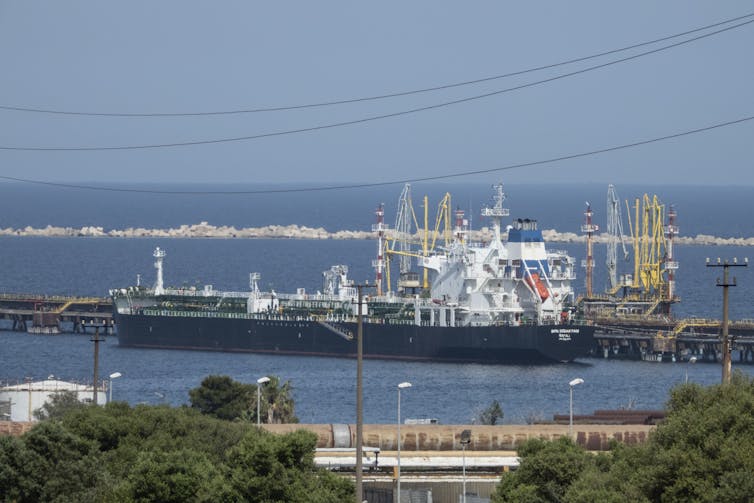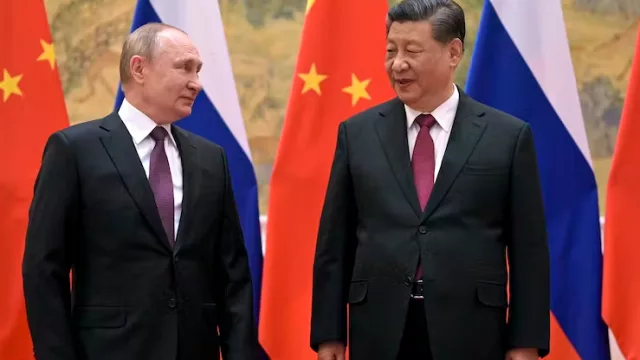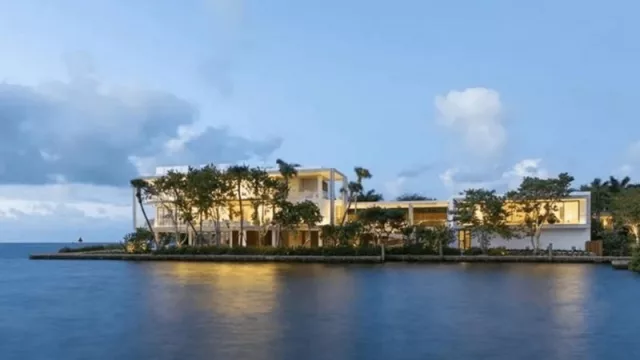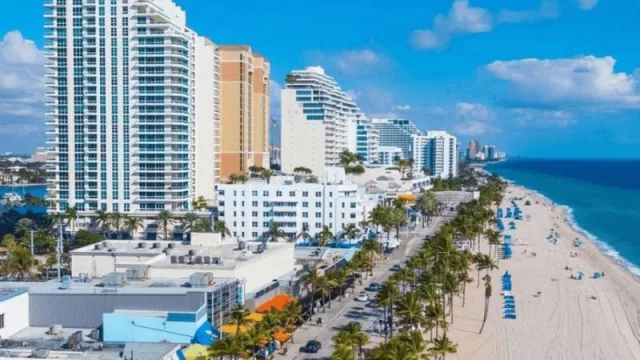The initial sanctions included the freezing of Russian assets abroad and a ban on the export of key technologies to Russia. Over the course of 2022, the sanctions were ratcheted up significantly as the European Union eventually phased in a radical reduction of the purchase of Russian oil and gas. Separately, over 1,200 Western companies closed their operations in Russia.
One year into the war, are the sanctions working?
Initial setbacks but quick recovery
Before the invasion, Western nations had hoped the threat of sanctions would deter Russia from attacking Ukraine. But once the invasion began, the goal shifted to deterring President Vladimir Putin from escalating and encouraging him to withdraw – by reducing his ability to fund his war machine.
At first, Western commentators were confident that the sanctions were working.
In the first week of the war, the Russian ruble plunged in value as Russians panicked when most Russian banks were excluded from the Swift international transaction system and government assets in foreign banks were frozen. However, Russia’s central bank was able to quickly stabilize the exchange rate, bringing it back to prewar levels. Inflation peaked at 18% in April before easing to 12% by December.
Even after that, some Western observers continued to insist that the sanctions were crippling the Russian economy.
It is true that the sanctions have devastated certain sectors, notably aviation and auto manufacturing, which saw an 80% decline in output due to lack of imported components. However, overall Russia finished 2022 with a mere 3% contraction in its gross domestic product. Retail sales fell 9% during the year, with local brands – along with some Chinese and Turkish companies – replacing Western companies on the domestic market.
Despite the sanctions and setbacks on the battlefield, Putin has shown no signs of backing down. In September, he mobilized 300,000 reservists and started a campaign to cripple Ukraine’s electricity system through missile and drone attacks.
I have studied the Soviet and the Russian economy for over four decades. I believe there are four reasons the sky has yet not fallen in on the Russian economy.

1. Russia’s energy lifeline
Russia may be spending over US$300 million a day to fight the war, but for much of 2022 it was earning $800 million every day from energy exports. That revenue stream was enough to prevent living standards from collapsing and to replenish Russia’s stock of arms and ammunition.
The war, together with Russia’s cutback on gas deliveries to Europe in 2021, caused a spike in oil and gas prices. In the first month of the war, global oil prices surged 50%, reaching a peak of $139 a barrel in April, while wholesale gas prices in Europe increased 500%, peaking at 300 euros ($320) per megawatt-hour. This created windfall profits for Russia.
Even though the volume of Russian oil and gas exports to Europe fell in 2022, its energy revenues surged to $168 billion for the year, the highest level since 2011. Russia ended the year with a current account surplus of $227 billion, a record high.
2. Russia has plenty of other customers
Second, the 49 sanctioning countries account for just 60% of the world’s economy. That leaves 40% still willing to do business with Moscow.
Most non-Western countries refused to join the sanctions. Many view the Ukraine war as a result of great power rivalry and do not blame Russia. India and China are buying even more Russian oil and gas – though they persuaded Russia to give them a steep discount of $20 to $30 a barrel. Turkey is also a critical partner: Its trade with Russia increased 45% in 2022.
And despite their efforts to reduce purchases from Russia, European countries have still bought $125 billion of Russian oil and gas since the invasion began, compared with $50 billion by China, $20 billion by Turkey and $18 billion by India.
3. Russia’s economy is battle-hardened
The third factor is that the observers predicting Armageddon failed to appreciate the Russian economy’s unique features.
The Russian government has been preparing and planning for this war for many years and has learned to live with and work around the sanctions that were imposed after the annexation of Crimea in 2014.
The tumultuous 1990s taught Russian business, consumers and workers how to adapt to random shocks – such as the high inflation that wiped out many people’s savings or the corporate raiders and tax police who stole businesses. Many people came to expect the worst and prepared for it. As a whole, they are both resilient in the face of challenges and resigned to lower expectations.
The Russian labor market generally absorbs shocks not by companies firing workers but paying them less until things improve. Also, 15% of the workforce is made up of migrants, mainly from Central Asia – and they can be fired and sent home, then rehired as needed.
4. Oligarchs and policymakers remain loyal
One of the key political assumptions animating the initial sanctions strategy was flawed.
The theory was that the sanctioned oligarchs stood to lose tens of millions of dollars and access to their Western luxuries, and they would persuade Putin to change course to save their fortunes.
Well, I’d argue that Russia is a dictatorship, not a kleptocracy, and Putin values national power over personal wealth. The oligarchs lost half or more of their net worth, but few have publicly criticized the war. They knew that challenging Putin would mean losing their businesses in Russia, at the very least.
Meanwhile, the “liberal” economists running the central bank and finance ministry – who were pivotal in helping Russia withstand the sanctions – stayed loyal. As the Financial Times put it, “Putin’s technocrats saved the economy to fight a war they opposed.”
Some observers hoped that the sanctions would cause ordinary Russians to rise up in protest. That did not happen. There were protests, but they tapered in the face of police repression, with over 19,500 people arrested and some leaders sentenced to eight years in jail.
The main response of those opposing the war was to leave the country. Some 500,000 have left, including many technology workers – which will undoubtedly crimp Russia’s economic growth.
Signs of economic weakness
As the war enters its second year, there are reasons to believe that this situation may change.
It’s important to note that the Russian government stopped publishing most aggregate economic statistics, so all the data must be treated with caution – and it’s possible the reality is worse than the data suggests.
And Putin’s energy lifeline may be running out, with European purchases set to decline substantially in 2023. On Dec. 5, 2022, the EU imposed a $60-a-barrel price cap on Russian crude, blocking insurance for tankers carrying oil sold at a higher price. The cap on oil products came into effect on Feb. 5.
Russia’s federal budget was already under extreme pressure. Russia had a $47 billion deficit in 2022, which was covered by the National Welfare Fund. But that fund, which was $187 billion at the end of the year, is shrinking fast. In January 2023, a sharp drop in oil and gas revenue created a $38 billion deficit in one month alone. January might be an outlier, but if the trend continues, the Russian government will find it increasingly difficult to continue financing the war as the year progresses.
But for now at least, I believe that it’s clear the sanctions have not weakened Putin’s grip on power, nor his resolve – and capacity – to continue waging the war on Ukraine.
Peter Rutland, Professor of Government, Wesleyan University
This article is republished from The Conversation under a Creative Commons license. Read the original article.
![]()












Tu opinión enriquece este artículo: